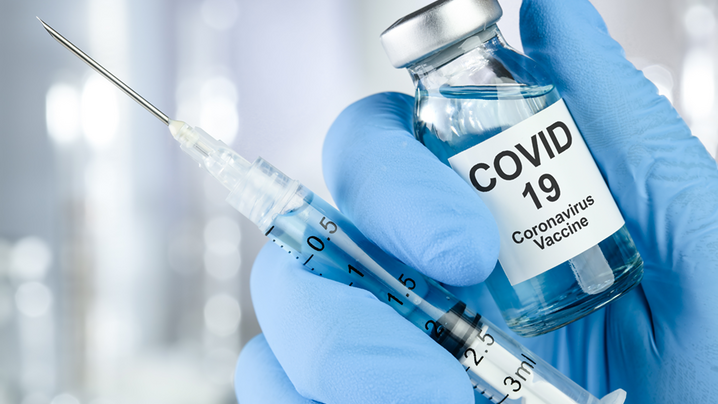
For the past 100 years, mass vaccinations have been a common occurrence throughout the world to stop the spread of deadly diseases. The Salk polio vaccine was one of the most celebrated medical advances of the mid-1950s for a disease that parents dreaded as the summer months heated up each year. In 1955, a mass vaccination program started in the United States after President Dwight Eisenhower signed the Polio Vaccine Assistance legislation sent to him by Congress.
The most recent example is the H1N1 flu outbreak in 2009-2010, which included vaccination coordination between all levels of government and the private sector. Some of the challenges experienced then that are expected to reemerge for the rollout of various COVID-19 vaccines include when, where, and how much vaccine is available; who gets vaccinated first; and how to store, distribute, and administer the vaccine locally given the peculiarities associated with the first two likely to hit the streets.
As with previous efforts, people will receive a COVID-19 vaccine in a variety of places, ranging from their own doctor’s facility to national pharmacy chains to temporary or satellite clinics run by state or local agencies and private sector or nonprofit operators. The Centers for Disease Control (CDC) has produced guidance for the operation of temporary satellite mass vaccination clinics. As the COVID-19 vaccine becomes available, there are some specific variables (in addition to CDC guidance) that local managers should pay particular attention to regarding satellite or temporary mass vaccination clinics organized and operated in their jurisdiction.
- Venue Selection. Sites for satellite and temporary vaccination clinics need the capacity to accommodate for social-distancing requirements. For example, several communities featured in a National Association of County and City Health Officials (NACCHO) webinar have developed plans for drive-through and walk-up customers at their proposed satellite clinics. Local governments have particular knowledge regarding zoning, land use, and community impacts of specific sites, which should be leveraged in partnership with community partners and private sector companies to assure a comprehensive vaccine distribution plan to provide the most equitable and safe process possible.
- Permitting. Any local requirements should be widely published and clearly articulated to potential satellite vaccination clinic operators. For example: does state and local law require permitting or inspection of satellite clinics? Are there any emergency or temporary ordinances related to the pandemic that require or relax permitting and/or inspection? Are there different requirements for temporary mass vaccination clinics operated by a nongovernmental entity such as a local pharmacy, regional medical group, college/university, or eligible nonprofit organization?
- Traffic and pedestrian access and control. For high volume sites, local governments will likely be required to assist with vehicle and foot traffic planning and management. Are the entry and exit points sufficient and safe for the expected flow of vehicles and people? Is the site ADA compliant and accessible? Is public transportation available for those local stakeholders who depend on it for their personal mobility?
- Crowd control and security. While there is nothing to suggest that security will be a major issue, long wait times and the other factors may lead to some minor security issues. Local governments should be prepared to provide necessary security for state and locally run vaccination clinics, as well as those operated by other authorized administering entities. Questions to have answers for might include: what active security (patrol officers) and passive security (video surveillance) is necessary to secure satellite locations? Is any auxiliary or private security necessary in addition to that available from state and local agencies?
- Emergency medical support. Large gatherings and events, including satellite vaccination clinics, may need trained personnel on site in case of medical emergencies. Is there capacity from the local jurisdiction that can be made available as the primary or secondary EMT services?
- Assess your backstop capabilities. Even the best plans can be impacted by a host of variables, including weather, power outages, and human errors. The COVID-19 vaccination process will be the most complicated one ever implemented, according to most experts. There will be multiple vectors for things to go wrong with satellite clinics operated outside of traditional medical or public health facilities. What available equipment—portable generators, temporary lighting, or pedestrian traffic stanchions—does your local government maintain that could be used if necessary? Could your jurisdiction’s stockpile of PPE be accessed by a satellite clinic if there were supply problems at a site operated by a nongovernmental organization? Are there other services, such as solid waste or hazardous/medical waste management, that your government can provide? Are there government employees or local volunteers who can serve as translators to help with communication issues with non-English speaking populations?
- Getting the word out. Local elected and appointed leaders are being called upon to promote the importance of vaccination for ending the pandemic. Managers may think about how their communication channels, including public television, radio, social media, on-bill marketing, and website notifications, can be used to advertise and promote vaccination and the clinics.
Advancements in vaccine development and our capacity to introduce vaccines on a global scale will hopefully slow down if not stop the COVID-19 pandemic within a fraction of the time it took to end polio, smallpox, and other viral diseases. While we cannot predict how long it will take to bring the current pandemic to an end, satellite, temporary, and remote vaccination clinics are certainly a crucial element in vanquishing COVID-19 to the history of pandemics.
As ICMA has noted in earlier content, vaccination is the next major logistical challenge for the COVID-19 pandemic. Preparation and planning now will be essential to ensuring that vaccination runs as smoothly at satellite clinics as it would in any doctor’s office, and local government leaders, managers, and staff have their parts to play.
New, Reduced Membership Dues
A new, reduced dues rate is available for CAOs/ACAOs, along with additional discounts for those in smaller communities, has been implemented. Learn more and be sure to join or renew today!
